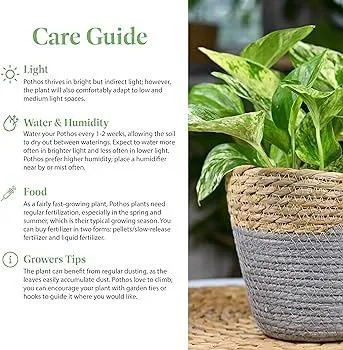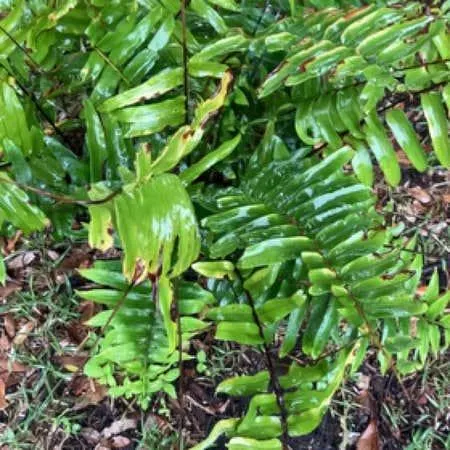A Comprehensive Guide to Caring for English Ivy
English ivy (Hedera helix) is one of the most popular houseplants thanks to its ability to thrive with little care. However, to keep your ivy looking its best, there are some important tips you should follow regarding watering, sunlight, pruning, and pests. By understanding the needs of this versatile vine, you can enjoy it for many years to come.
Watering English Ivy
When it comes to watering, ivy is quite forgiving—it can tolerate both wet and dry periods. However, allowing the soil to dry out too much may cause leaf drop. As a general rule, water whenever the top inch of soil is dry. Water thoroughly until water drains out the bottom of the pot, then discard any excess in a tray. From my experience, English ivy prefers evenly moist soil.
The frequency of watering will depend on factors like light, humidity, and rate of evaporation. As a guide, water every 7-10 days during spring and summer. You may need to water as infrequently as every 2-3 weeks in winter when the plant is dormant. Feel the soil and observe the plant for signs of thirst such as drooping or curled leaves.
Light Requirements for English Ivy
While ivy can grow in low light, it thrives best in medium to bright indirect sunlight. Direct sun may cause leaf scorching, so protect ivy from the hot afternoon sun. Leaf color is also brightest in adequate light conditions. I’ve found east or west-facing windows provide the perfect combination of sun and shade. Ivy grown in low-light areas will be leggy and pale green. Consider supplementing weak artificial light if necessary during winter months.

Pruning and Training English Ivy
Ivy is an attractive vine that can cover walls, trellises, or be trained as a topiary. During the growing season from spring to fall, you should regularly prune ivy to maintain its shape and encourage bushier growth. Cut back leggy stems by one-third using clean pruners. You can also pinch back new growth to encourage branching. Be gentle since ivy stems can be brittle.
To train ivy vertically, guide new growth up a support using twist ties or plant clips. Allow it to cascade over the edges of hanging baskets for a lush effect. With patience and pruning, you can sculpt ivy into beautiful forms. Just beware—ivy can be invasive if not contained!
Fertilizing English Ivy
While ivy grows well with little fertilizer, feeding monthly during the growing season supports luxurious foliage. Use a dilute, balanced liquid houseplant food following label instructions. Ivy prefers nutrient-rich, well-draining soil that retains moisture. I like to use a potting mix amended with peat moss or perlite. Repot ivy every 2-3 years in early spring before new growth starts.
Pests and Diseases of English Ivy
Most ivy plants remain pest-free with proper care. However, signs of pests include yellowed or spotted leaves, webbing, or crawling insects. Common offenders include spider mites, scale, and mealybugs. I’ve had luck controlling minor infestations with neem oil or insecticidal soap, but severe cases may require chemical treatment. Prevent disease by pruning dead growth and providing airflow.

Watch for signs like brown leaf tips or drooping foliage that could indicate too much or too little water, poor drainage, or root rot from overwatering. As with all houseplants, attentively monitor your ivy and address issues promptly for a long, healthy life indoors! But try not to overanalyze slight imperfections—like humans, plants aren’t perfect.
Unique Uses for English Ivy
Beyond being an attractive addition to any home, ivy has some unique properties worth exploring. For example, English ivy gives off oxygen at night, making it a natural air purifier. Its ability to remove formaldehyde, benzene, and trichloroethylene from indoor air has earned it the nickname “the asthma plant.” Growing ivy in a child’s bedroom has even been shown to help symptoms. Who knew such an inexpensive, low-maintenance plant could offer so many benefits?
Ivy is also commonly used in landscaping to prevent erosion, smother weeds, or disguise ugly areas. Weaving ivy through a wire fence lends a cozy, rustic look. But is encouraging growth outside your means of containment a wise choice? You risk introduction into surrounding habitats. So use caution before letting ivy run wild in your yard or community.
Hopefully this overview has answered any questions about caring for English ivy as a houseplant or landscaping vine. But as always, trust yourself and your plant’s needs above rigid rules. Plants are living things that may surprise you! With patience and experience, your ivy will flourish for years to come. Please feel free to ask if any other queries arise on this versatile plant. Happy growing!

English Ivy Care and Growth Tips
| Fact | Details |
|---|---|
| Light Needs | English ivy grows best in bright, indirect light. It can tolerate low light but may not thrive. |
| Water | Water when the top inch of soil is dry. Allow soil to dry slightly between waterings. |
| Temperature | English ivy grows best in temperatures between 60-75°F. It can tolerate brief periods below 50°F but may drop leaves. |
| Humidity | English ivy appreciates moderate humidity and may drop leaves if the indoor humidity is too low. |
| Fertilizer | Fertilize in spring and summer with a dilute liquid houseplant fertilizer every 2-4 weeks. |
| Pruning | Prune as needed to maintain shape and size. Cut back by 1/3 after flowering to encourage new growth. |
FAQ
-
How do I plant english ivy?
English ivy can be planted in early spring or fall. Dig a hole slightly deeper and wider than the root ball. Place the ivy in the hole and fill with soil, packing it down gently. Water well and make sure the soil does not dry out for the first few weeks.
-
What kind of care does english ivy need?
English ivy basically needs minimal care. It thrives in bright, indirect light but can handle low light areas. Water when the top inch of soil is dry. Ivy may not do well without any water for an extended period. Fertilize in spring and summer for lush growth. Prune dead or overgrown stems to keep it looking good.
-
Is english ivy toxic to pets or humans?
While ivy leaves and stems aren’t typically eaten, they may cause minor stomach upset for pets or kids if ingested in large quantities. English ivy berries can pose more of a risk. They kinda look like grapes so watch out that no one munches on them by mistake! Otherwise, english ivy is generally not considered toxic.
-
What problems might english ivy have?
Pests or diseases are rarely a bother for hardy ivy. However, leaf spot fungus might strike if leaves stay wet for long periods. Mealybugs sometimes infest during hot weather. Good airflow and pruning away affected growth usually does the trick. Slugs or snails can occasionally nibble new growth too.

-
Should I grow english ivy indoors or outdoors?
While ivy grows nicely as a houseplant indoors, it clearly prefers the great outdoors. Place it in partial shade away from drafts. An eastern or southern exposure allows morning sun. Move the pot outdoors in summer for more brightness. Overwinter as a houseplant in a sunroom or bring outside again come spring.
-
Is english ivy good for the environment?
On the one hand, english ivy provides shelter for birds and wildlife. Its dense cover also prevents soil erosion. At the same time, it may rob nutrients from other native plants when overgrown in the wild. Though attractive, english ivy is an invasive species in some regions. It forms thick mats that displace trees and shrubs. So use it carefully or find native groundcovers instead.
